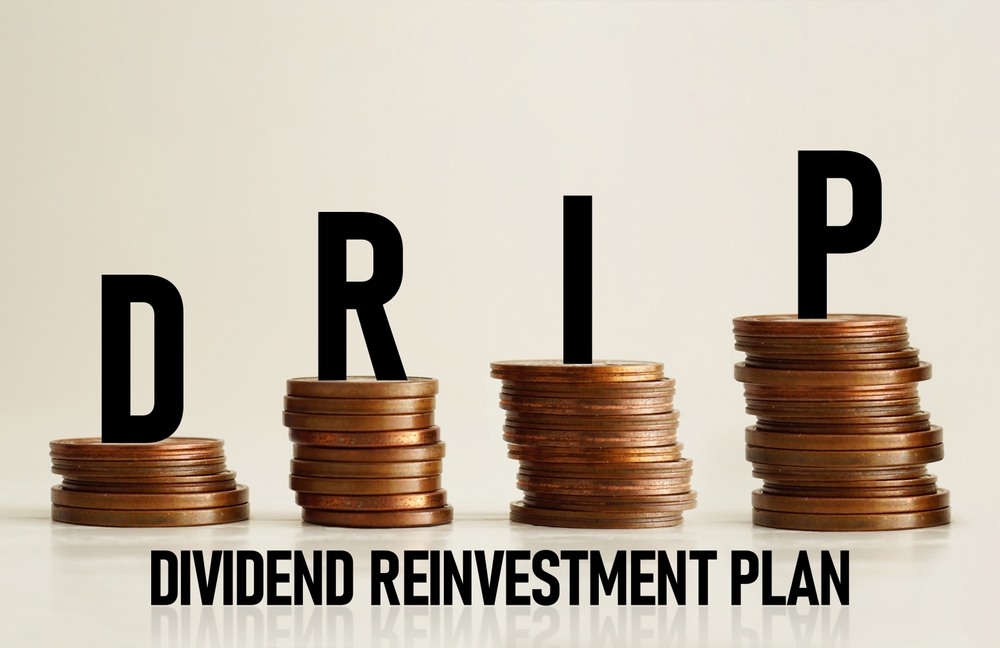Building wealth in Canada goes beyond traditional investments like stocks, bonds, or mutual funds. Many investors are now exploring lesser-known tools that provide both growth and security. These unique options can help diversify portfolios, reduce risks, and uncover new income streams. Here are 22 little-known investment tools for Canadian wealth builders.
Using Labour-Sponsored Investment Funds (LSIFs)

Labour-Sponsored Investment Funds (LSIFs) are investment vehicles designed to support small and medium-sized businesses in Canada. They are often managed by labour organizations and focus on promoting local economic growth. Investors in LSIFs may benefit from federal and provincial tax credits, which reduce overall costs. However, LSIFs usually carry higher risk and more extended holding periods compared to traditional mutual funds. They can offer attractive returns but may lack liquidity. Investors should review eligibility rules and tax credit availability since not all provinces still support LSIF programs. For experienced investors, LSIFs can be a valuable tool for portfolio diversification.
Exploring Mortgage Investment Corporations (MICs)

Mortgage Investment Corporations (MICs) pool investor funds to provide loans secured by real estate. They generate income primarily through interest payments on these loans. MICs are regulated under the Income Tax Act, which requires them to distribute all net income to shareholders annually, making them appealing for income-focused investors. Many MICs offer steady monthly or quarterly distributions. Risks include exposure to defaults or real estate market downturns. MICs are generally accessible through private investment channels or specialized firms. They allow Canadians to participate in the real estate lending market without directly managing properties or dealing with tenants.
Investing Through Real Estate Investment Trusts (REITs)

Real Estate Investment Trusts (REITs) give Canadians exposure to real estate markets without needing to purchase property directly. REITs pool investor money to own and manage income-producing properties, including residential buildings, commercial offices, and shopping centers. Investors benefit from regular income through dividends and potential long-term capital appreciation. REITs trade on stock exchanges, offering liquidity compared to direct real estate ownership. They also provide diversification by spreading risk across different property types and geographic areas. While REIT values may fluctuate with market conditions, they remain a practical way for individuals to add real estate exposure to their portfolios.
Accessing Flow-Through Shares in Resource Sectors

Flow-through shares are a tax-advantaged investment option available in Canada’s resource industries, such as mining, oil, and gas. Companies issue these shares to raise capital for exploration and development. Investors who purchase flow-through shares can deduct exploration expenses from their taxable income, often resulting in significant tax savings. Some provinces also provide additional incentives for these investments. However, these shares are typically high-risk due to the speculative nature of resource exploration. They are best suited for experienced investors seeking both tax benefits and potential high returns. Flow-through shares combine tax efficiency with opportunities in Canada’s resource-driven economy.
Building Income with Preferred Shares

Preferred shares are hybrid investments that combine features of both stocks and bonds. They typically pay fixed dividends, providing stable income to investors. In Canada, dividends from preferred shares benefit from favorable tax treatment compared to interest income. These shares have priority over common shares in terms of dividend payments and company liquidation. However, they usually do not carry voting rights and may fluctuate in value with interest rate changes. Preferred shares can be an attractive option for income-focused investors seeking stability and tax efficiency. They provide a reliable stream of returns while diversifying an investment portfolio.
Leveraging Exchange-Traded Notes (ETNs)

Exchange-Traded Notes (ETNs) are debt instruments issued by banks that track the performance of an underlying index, commodity, or strategy. Unlike ETFs, ETNs do not hold assets but rely on the creditworthiness of the issuing bank. They offer exposure to specialized markets, including commodities, currencies, or niche investment strategies that may be difficult to access otherwise. ETNs can provide tax-efficient returns, but investors face both market risk and credit risk. If the issuer defaults, investors may lose their capital. For Canadians seeking alternative exposure beyond traditional assets, ETNs can add flexibility and diversity to investment strategies.
Adding Stability with GIC Ladders

Guaranteed Investment Certificates (GICs) are low-risk investments that provide fixed returns. A GIC ladder strategy involves buying multiple GICs with staggered maturity dates. For example, instead of investing CA$25,000 in a single 5-year GIC, you split it into five CA$5,000 GICs maturing annually over five years. Each year, one GIC matures and can be reinvested at current rates. This approach provides regular liquidity and protection against interest rate changes. GIC ladders balance security with flexibility, making them suitable for conservative investors. They offer stable returns while reducing the risk of locking all funds into a single interest rate environment.
Considering High-Interest Savings ETFs

High-Interest Savings ETFs are exchange-traded funds that invest primarily in high-interest savings accounts held with Canadian banks. These ETFs aim to provide higher yields than traditional savings accounts while maintaining liquidity. They trade on stock exchanges, allowing easy buying and selling like any other ETF. Distributions are typically paid monthly, making them appealing for investors seeking income. High-interest savings ETFs carry low risk since the funds are generally deposited with multiple banks. However, returns depend on prevailing interest rates and are not guaranteed. They provide a practical tool for parking cash temporarily while earning more than a standard savings account.
Using Robo-Advisors for Automated Investing

Robo-advisors are digital platforms that provide automated investment management based on an investor’s risk tolerance, goals, and time horizon. In Canada, popular robo-advisors include Wealthsimple, Questwealth, and Justwealth. They typically use low-cost ETFs to build diversified portfolios and automatically rebalance them when needed. Fees are lower than those of traditional financial advisors, often ranging between 0.25% and 0.50% annually. Robo-advisors also provide tools like automatic deposits and tax-loss harvesting in some cases. They are suitable for individuals who prefer a hands-off approach to investing. By combining technology with financial planning, robo-advisors offer a convenient and affordable way to grow wealth consistently.
Diversifying with Peer-to-Peer Lending Platforms

Peer-to-peer (P2P) lending platforms allow Canadians to invest directly in loans to individuals or small businesses. Investors earn returns through interest payments while borrowers gain access to financing outside traditional banks. Platforms like Lending Loop have made P2P lending accessible in Canada. Investors can choose different risk categories, with higher-risk loans offering higher potential returns. Diversification across multiple loans helps reduce risk. While P2P lending can provide a steady income, it also carries default risk. It is less liquid than stocks or ETFs since funds are tied up until loans are repaid. P2P lending offers an alternative fixed-income investment option.
Investing in Green Bonds

Green bonds are fixed-income securities issued to finance environmentally friendly projects such as renewable energy, energy efficiency, and sustainable infrastructure. In Canada, both governments and corporations issue green bonds, making them widely available to investors. Returns are comparable to traditional bonds, but the funds are directed toward projects with positive environmental impact. Green bonds appeal to socially responsible investors who want financial returns while supporting sustainability. Risks include interest rate fluctuations and issuer creditworthiness. The market for green bonds is expanding, offering investors more opportunities to align their portfolios with environmental goals while maintaining stable, income-producing investments.
Accessing Private Equity Funds

Private equity funds pool capital from investors to acquire stakes in private companies. These funds focus on business growth, restructuring, or buyouts, aiming for high returns over the long term. In Canada, access is usually limited to accredited or high-net-worth investors due to higher risk and lower liquidity. Returns can be substantial, but funds often require multi-year commitments before profits are realized. Private equity provides diversification outside public markets and exposure to unique opportunities. For experienced investors, private equity funds can enhance overall portfolio growth, but careful due diligence and patience are essential before making such commitments.
Participating in Angel Investing Networks

Angel investing involves providing capital to early-stage startups in exchange for equity. Angel investors typically join networks to access vetted opportunities and share due diligence. In Canada, groups like the National Angel Capital Organization (NACO) connect investors with startups across industries. Returns can be high if the startup succeeds, but the risk of failure is significant. Beyond financial returns, angel investing also offers opportunities to mentor entrepreneurs and contribute to innovation. Investors should be prepared for illiquidity, as exits may take years. For those comfortable with risk, angel networks provide access to promising ventures with growth potential.
Exploring Limited Partnerships in Energy and Real Estate

Limited partnerships (LPs) are investment structures commonly used in energy and real estate projects. Investors become limited partners, contributing capital while general partners manage operations. LPs can provide tax benefits, steady income, and exposure to sectors like oil, gas, or property development. They are usually offered through private placements and may require higher minimum investments. Risks include market fluctuations, project delays, or sector downturns. Returns vary depending on project success, but LPs often distribute income regularly. For investors seeking alternatives to traditional stocks and bonds, LPs provide access to specialized opportunities in Canadian energy and real estate markets.
Investing Through Dividend Reinvestment Plans (DRIPs)

Dividend Reinvestment Plans (DRIPs) allow investors to automatically reinvest dividends into additional shares of a company rather than receiving cash. Many Canadian companies and ETFs offer DRIPs, often at no extra cost. Some plans even provide discounts on reinvested shares, increasing overall returns. DRIPs encourage long-term investing by compounding growth over time. They also eliminate transaction fees typically associated with buying new shares. While DRIPs are best for investors who do not need immediate income, they help build larger positions in quality companies. Over time, reinvested dividends can significantly boost portfolio growth without requiring active trading decisions.
Using Gold and Precious Metal ETFs

Gold and precious metal ETFs give Canadian investors an easy way to access commodities without holding them physically. These funds track the price of gold, silver, or other metals, providing a hedge against inflation and market downturns. They are traded on Canadian exchanges like regular stocks, offering liquidity and transparency. Investors often use them to balance portfolios during uncertain economic periods. While returns can fluctuate based on global demand and supply, they remain a reliable diversification tool. By including precious metal ETFs, Canadians can preserve purchasing power and protect their wealth. This makes them a steady long-term investment option.
Building Growth with Small-Cap Equity Funds

Small-cap equity funds focus on Canadian companies with smaller market capitalizations, typically offering higher growth potential compared to large-cap firms. These businesses often expand faster, which can lead to more substantial returns for investors willing to take on additional risk. While volatility is greater, diversification across multiple small-cap stocks within a fund reduces individual company risk. Many Canadian investors choose small-cap funds to boost growth in balanced portfolios. Over time, these funds can deliver significant capital appreciation, especially in sectors like technology, healthcare, and renewable energy. Including them allows wealth builders to tap into early-stage business success stories.
Considering Infrastructure Funds

Infrastructure funds allow Canadians to invest in large-scale projects like roads, bridges, utilities, and renewable energy systems. These investments are often backed by government support or long-term contracts, making them relatively stable. Infrastructure projects typically generate steady cash flows, providing income for investors while contributing to national growth. Canadian funds in this sector often include domestic and international assets, offering geographic diversification. Returns are less volatile than equities, making them appealing for conservative investors. Infrastructure investments also benefit from rising demand for modernization and green projects. They offer both growth potential and inflation protection, strengthening overall portfolio performance.
Using Closed-End Funds for Income Opportunities

Closed-end funds (CEFs) pool money from investors and trade on exchanges, similar to stocks. Unlike open-end mutual funds, CEFs have a fixed number of shares, which can trade at discounts or premiums to their net asset value. Many Canadian CEFs focus on income-generating assets such as bonds, preferred shares, and dividend stocks. They are popular among retirees seeking steady payouts. While liquidity can be lower compared to ETFs, CEFs often provide higher yields due to active management strategies. For Canadians seeking consistent cash flow, closed-end funds can be a helpful addition to an income-focused portfolio.
Accessing Venture Capital Trusts

Venture Capital Trusts (VCTs) allow Canadians to support innovative startups and early-stage businesses while enjoying tax advantages. These trusts pool investor money to fund high-growth companies in industries like technology, biotechnology, and clean energy. While risk levels are higher, potential returns can be significant if companies succeed. Some Canadian provinces encourage such investments through incentives or credits. VCTs also provide diversification since investments are spread across multiple startups. This tool appeals to investors with a higher risk tolerance and long-term outlook. By supporting emerging businesses, investors not only grow wealth but also contribute to Canada’s innovation-driven economy.
Investing in Agricultural and Farmland Funds

Agricultural and farmland funds let Canadians invest in farmland operations and food production assets. These funds benefit from rising global demand for food and limited arable land, which helps preserve long-term value. Farmland also tends to appreciate steadily while generating income through crop sales or land leases. Many Canadian funds allow access to domestic and international farmland opportunities, spreading risk across regions and crops. Agricultural funds can also include companies involved in fertilizers, equipment, and processing. This investment class offers stability, income, and protection against inflation. It is an effective way for Canadians to diversify traditional portfolios.
Exploring Structured Notes for Customized Returns

Structured notes are financial products issued by Canadian banks, combining bonds with derivatives to provide tailored returns. These investments allow customization based on risk tolerance, time horizon, and desired outcomes, such as capital protection or enhanced yields. For example, some notes guarantee principal repayment while linking returns to stock market performance. Others offer higher payouts in exchange for more risk. Structured notes provide flexibility that standard investments may not offer. However, they are more complex and often require guidance from financial advisors. For Canadian wealth builders, structured notes can deliver unique opportunities to balance safety and growth.
21 Products Canadians Should Stockpile Before Tariffs Hit

If trade tensions escalate between Canada and the U.S., everyday essentials can suddenly disappear or skyrocket in price. Products like pantry basics and tech must-haves that depend on are deeply tied to cross-border supply chains and are likely to face various kinds of disruptions
21 Products Canadians Should Stockpile Before Tariffs Hit